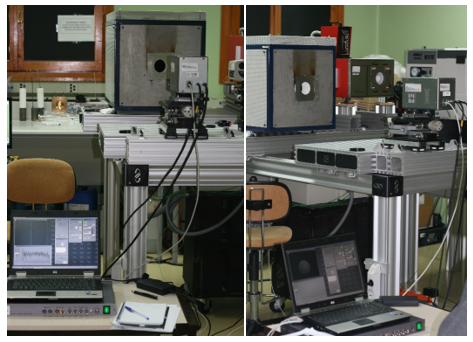EMPRESS 2: Enhancing process efficiency through improved temperature measurement 2
The efficiency of high value manufacturing processes is heavily reliant on accurate, traceable temperature measurement, with some processes requiring reliable control capabilities at temperatures up to 2000°C. Current state-of-the-art methods used by industry to measure at high temperatures suffer from drift and large measurement uncertainties. Improved measurement capability could lead to guarantee product consistency, refine sensors reliability and increased energy efficiency, reducing costs for manufacturers. This EMPRESS 2 project seeks to enhance the efficiency of high-value manufacturing processes by addressing four contemporary thermometry challenges where the need for improvement is greatest, namely, surface contact temperature probes, thermocouples, combustion thermometry, and optical fibres.
Funded by EURAMET’s European Metrology Programme for Innovation and Research (EMPIR),the project is characterized by trials directly focusing into the industrial processes of interest to develop novel calibration techniques looking for solving documented problems in high value manufacturing environments by introducing in-situ traceability to the International Temperature Scale of 1990 (ITS-90)
the European Association of National Metrology Institutes (EURAMET) is a metrology-focused European initiative of coordinated R&D that facilitates closer integration of national research initiatives. It is integrated into the framework of the EU research and innovation programme, Horizon 2020. EMPIR seeks to unite the efforts of European metrology institutes to universities, companies and research centres. LIR-UC3M participates in this consortium with the Spanish Metrology Centre (CEM).

Figure 1. Left, TELOPS hyperspectral imaging sensor which uses Fourier Transform Infrared (FTIR) technology
Right,NPL standard flame at LIR-UC3M facilities.
Following the success of the previous EMPRESS project, LIR-UC3M keeps an important role described in the Work Package (WP) 3: “Demonstration of a validated in-situ combustion reference standard”. The aim of this WP is to demonstrate the use of the flame reference standard, used during the EMPRESS project, for the development of an affordable IR optical system to increase the accuracy for high temperature measurements. LIR-UC3M will develop a multi-spectral filter-based concept incorporated with an IR imaging camera which is expected to reduce conventional systems costs without compromise the advisable accuracy of the measurements.
In order to validate a multispectral imaging system in the mid-infrared that allows obtaining high temperature values almost as accurate as those obtained in the first stage of the project with the hyperspectral imaging system, the LIR-UC3M facilities were again equipped with the standard flame system of the NPL (United Kingdom). Unpacking and installation of the system by Gavin Sutton and Alberto Sposito (NPL) took place at the end of June 2019. The system was at the LIR-UC3M facility during the second half of 2019 for multiple measurements, under various mixing configurations (fuel/air).
The objective is to study the best configuration of optical filters in the mid-infrared to fully cover the spectral signature of the emission gases in order to be able to relate the values measured in integrated radiance to the flame temperature. In early 2020, the standard flame system returned to the NPL facility for calibration and subsequent travel to the other work package collaborator and work package leader, DTU (Danish Technical University).

Figure 2. NPL standard flame system installation (June 2019).
Above left: Display of the standard flame in the hyperspectral imaging system software.
Explanation by Juan Meléndez to Gavin Sutton and Alberto Sposito.
Above right: Standard NPL flame system installed on the LIR-UC3M.
Bottom left: Details of the standard NPL flame.
Bottom right: Multi- and hyperspectral infrared imaging systems used in the NPL standard flame system measurements.
As a follow-up activity to the measurements with the NPL standard flame system, between January 22 and 23, 2020, the LIR-UC3M carried out the radiance calibration of the multispectral imaging system at the thermometry laboratory of the CEM (Centro Español de Metrología) located in Tres Cantos (Madrid). The process was delayed due to the mechanical adaptation of the system to the laboratory environment, as well as the need to wait long periods of time for the cavity black bodies used in the calibration to reach the desired high stable temperature values for the measurements.
For this work we had the support of María José Martín, head of the thermometry laboratory at CEM and regular collaborator of EMPIR projects in radiation temperature issues, who was in charge of the temperature control of the black bodies used, as well as the measurement of uncertainty in each case.

Figure 3. Calibration of the LIR-UC3M multispectral imaging system in the CEM thermometry laboratory
using a very high temperature cavity blackbody.

Figure 4. Calibration of the LIR-UC3M multispectral imaging system in the thermometry laboratory.
using a very high temperature cavity blackbody.
One of the world’s most important conferences on infrared thermography is Thermosense. The 43rd edition of this event will take place virtually in April 2021 and will feature a paper entitled “Mapping of temperature and CO2 column density in a standard flame by multispectral imaging” based on the work related to the project carried out so far by the LIR-UC3M. For more information on this conference, as well as a summary of the presentation, please visit their website: https://spie.org/SI/conferencedetails/thermosense?SSO=1

